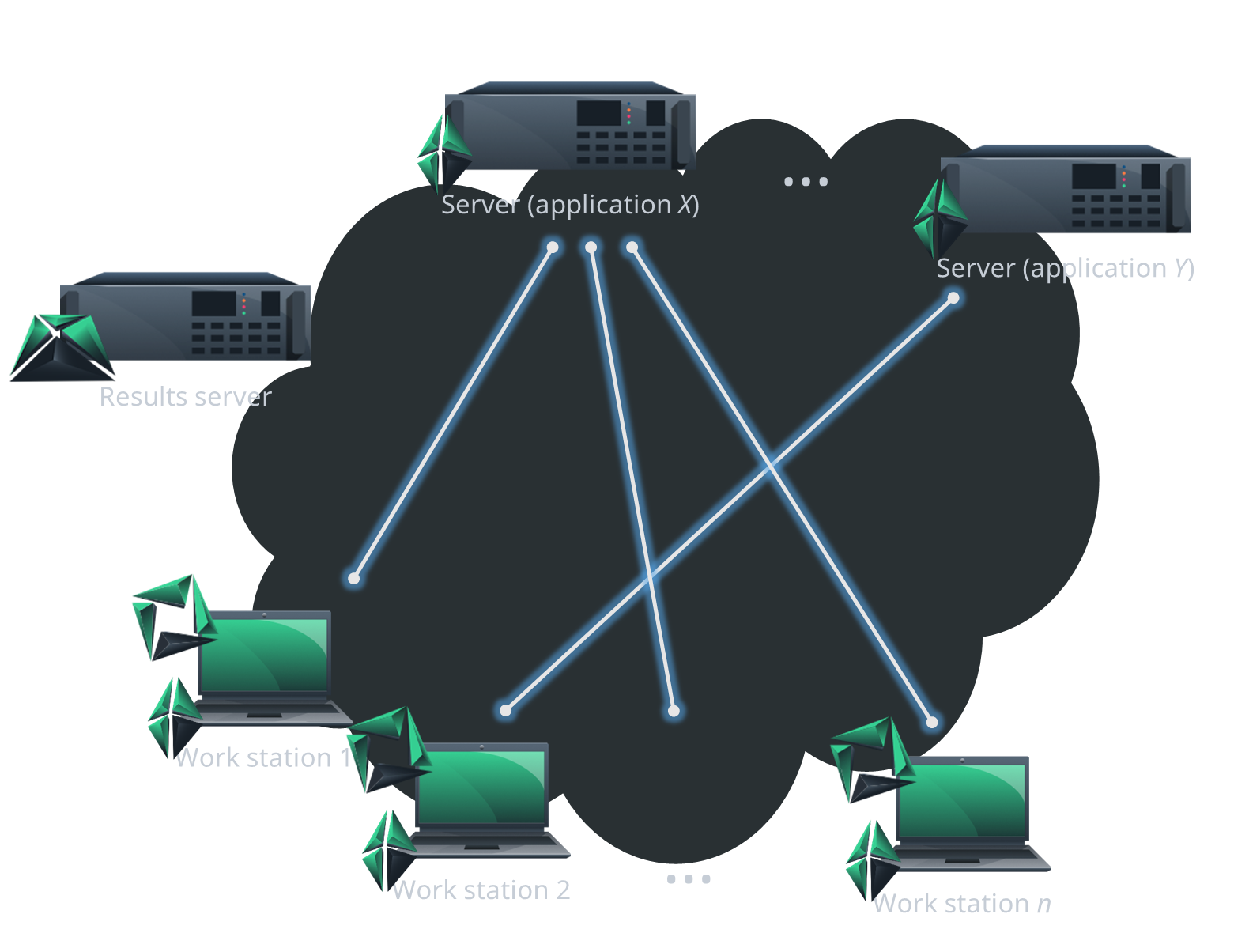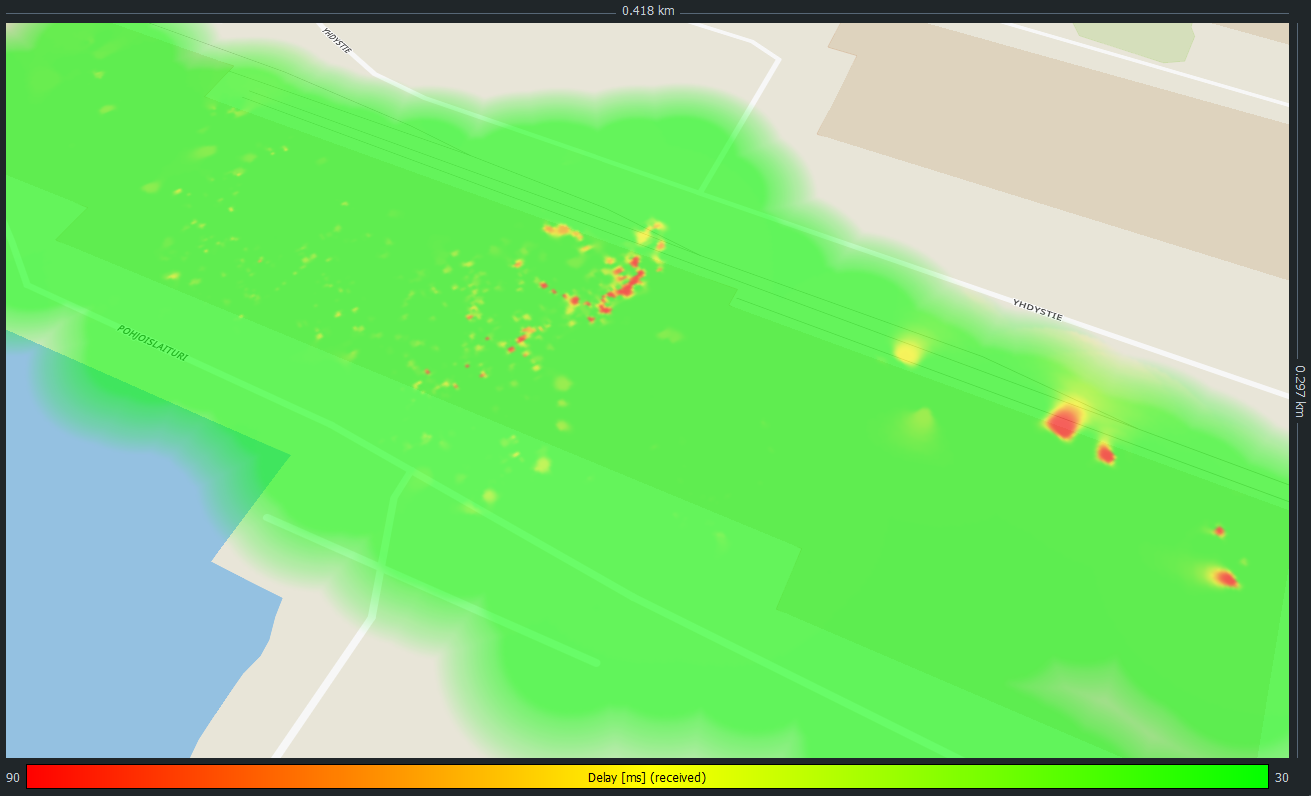
Qosium Scopemon
Qosium Scopemon is the key to continuous and automated monitoring of critical applications and services.


Qosium Scopemon is the key to continuous and automated monitoring of critical applications and services.

Qosium Scopemon is a measurement controller targeted for automated QoS monitoring. Like always with Qosium, the service/application to be monitored can be everything without limits on network technologies throughout the measurement path. Qosium takes monitoring accuracy to the next level, which is required, especially for critical communications systems, where a decrease of quality can seize production, delay deliveries, or even cause damage and injuries.
Qosium Scopemon implements all measurement features of Qosium Probe. Two-point measurement is optimized: the measurement is on only when the traffic specified as interesting is flowing in the network. Scopemon can be used centrally, but the more typical usage scenario is to use it in a distributed manner (see the figure above). This distributes the measurement processing load and minimizes the results reporting overhead.
The commissioning of Scopemon is straightforward. After installation, the parameterization work includes configuring interesting traffic types (application and services) and measurement paths. Once Scopemon is started, its operation if fully autonomous. It is common to set Qosium Scopemon to start during the boot process of the host machine. This ensures that the monitoring of critical services/applications takes place whenever the network device is powered on.
Qosium Scopemon makes it simple for you to monitor multi-user large-scale networks. The results can be stored in a persistent database from which a real-time situation awareness dashboard of the network can be created. When it comes to wireless networks, combining measurement results with location information enables heatmap visualization. This is an ideal way to find out geographical problem areas in networks. A good example of this is a private LTE/5G network of a port. There, wireless networks pose a critical factor for the overall efficiency and safety of port operations. When the machinery do their every-day activity in the field, all their critical communications is measured and monitored at the same time. For instance, in the heatmap figure below, the LTE network’s one-way delay has been too high in the red areas, while in the green areas, data packet delay has been near or below the 30 ms target value.

Figure: An example of constant monitoring: Terminal storage and its surroundings in Port of Oulu (Oritkari), Oulu, Finland. (in cooperation: Port of Oulu and Herman Andersson)
The key task of Qosium Scopemon is to control measurements and deliver the results to the desired destination in real time. Typically, this is a database solution like Kaitotek’s Qosium Storage, or the database or cloud solution you already have in place. QMCP integration makes it possible to input results to any remote system. The results can be made available for network monitoring and management systems that can carry out joint real-time visualization and analysis operations from multiple simultaneous Qosium measurements around the network. Results can also be stored locally to a file, which already can be sufficient in small measurement setups.
Qosium Scopemon can perform simple automated analysis for the results locally. This includes, for example, triggering of alarms due to exceeding of certain pre-defined thresholds, like too high latency, by, e.g., email or SNMP Trap. Scopemon comes up with a straightforward user interface that is customizable so that it gives you the information you need with a quick glance. For the cases where the user interface is not required, it can also be hidden.
Despite Scopemon comes up with some inbuilt analysis capability, a more comprehensive and larger-scale analysis is usually carried out with other tools. Scopemon results are compatible with Qosium Scope. You can import the results to Scope for a more detailed look at what happened in the network. Moreover, the results are timely available for any existing network monitoring and management system.
What the detailed analysis and the actions triggered upon them can then be? At the simplest, alarms can initiate troubleshooting activity. In advanced network management systems, actions can be automated like, for example, traffic re-routing, application (e.g., video) quality adaptation to prevailing network conditions, and blocking or restricting of non-critical applications. Whatever the problem or the action is, Scopemon also offers information on to find out how the recovering actions really worked for the observed problem.